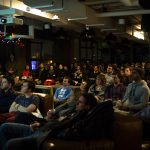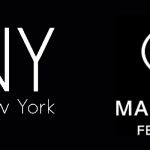Paving the Way for Animators in VR: A Conversation with Joe Daniels
Paving the Way for Animators in VR: A Conversation with Joe Daniels
“What I really want to show with my Thriller piece is a more polished animation than what we’ve been seeing until now. We need people to make the next Luxo Jr. out of it! We need to create quality compelling content so that people say: “Oh that looks as good as what I do but it looks more fun to do that. I want to do that!””
Joe Daniels has been working in the animation industry for more than a decade. He is the 3D Animation Director at TinyCo Games in San Francisco, and the Lead Animator on Harry Potter — Hogwarts Mystery. Joe has worked with clients such as Marvel, Warner Brothers, and Aardman Animation, and has been creating drawn animation in VR for about as long as this new medium has existed. He has a passion for exploring new tech and workflows related to the art of storytelling, and helping artists unleash their creativity. Joe will be giving a workshop this summer as part of the Anomalia VR Development Lab in Czech Republic. I invite you to find below some excerpts from our conversation.
Alex: Hi Joe, could you briefly introduce yourself and tell us a bit more about your background and interests?
Joe: I’m the 3D Animation Director at TinyCo Games where I’m currently working on a super exciting recently announced Harry Potter game. I have worked with clients such as Warner Brothers, Marvel, and Aardman Animation as I’ve been working in video games and commercial pipelines for more than a decade. I’ve always been interested in emerging technologies. Not just for the sake of cool new tech, but rather to see how I can integrate it to my everyday work. I was in first grade when I started becoming interested in CGI and CGI films. A couple years later when I saw Jurassic Park for the first time, I knew that CG animation was what I wanted to do. I loved all the Disney films and hand-drawn animation, but Jurassic Park and Toy Story just blew my mind! I knew this is what I wanted to do with art for the rest of my life so I started learning CG softwares like 3D Studio Max, Maya, etc. By the time that I graduated college, the CG industry was well established and it was hard to break in. But with this recent rebirth of VR it feels a bit like back in time of the first wave of CG: it’s messy and imprecise, the tools are kind of barely there, and it has that same small club energy that the initial CG artists had. When I first saw the video of Glen Keane drawing in Tilt Brush, it really inspired me. My wife didn’t know yet, but I started to save for a headset! [laughs] Like a lot of people, I had to buy a whole new computer setup and the headset. When I finally got it working, I immediately started to draw in Quill and Tilt Brush. It was very exciting! Then I found AnimVR, which is one of the primary animation tools that I’ve been using. At the time it was very primitive. It was hard to work with more than one layer and the UI was very clunky, but I could see the potential in it. I reached out to the developers and asked them if I could beta test their app and give them my feedback. This is how we started to work together with Dario and Milan (co-founders of NVRmind.io, the lab behind AnimVR).
A: What are you working on right now?
J: I just released my new piece, Thriller, which is inspired by MJ’s thriller dance. I’ve been working on it since October. I’m now finishing recording tutorials and process videos (now available on Gumroad). Since Quill released its animation feature in February, we’re seeing an explosion of artists that are becoming aware that animation in VR exists as an option, and I really want to give these people the tools they need to get to make their own shorts. I’d love to see more people tackling VR-animated films!
A: Joe your enthusiasm is contagious!
J: Once you’ve tried animating in VR, it’s hard to step away and say, “Well, that was worthless.” Usually the opposite happens, people are blown away, even with sculpting tools like Medium. Just drawing strokes around, connecting them together, working in all three dimensions at the same time, … it just makes sense! This is what computers always should have been for CG. Once you have had that experience, you realize that this is so significantly better not only for your creative process, but for your productivity. I brought my Rift into my office to show some coworkers these apps, we went from two to eight people equipped with headsets (I must apologize to a bunch of families, sorry I’m responsible for that video card and that headset that you husband has bought!). A few months ago, I was kindly invited to DreamWorks to give a presentation. I got to hang out with artists, producers, a wide range of people. I can tell you that the artists got it right. They were like “yes, this will save us time!” When I talked to producers, they were like “How much faster is this?” Their thinking is, as it should be, if this can save them money what are the risks? Could these softwares and hardwares become outdated in a couple of months because is it all changing so fast? Those are concerns that need to be addressed indeed.
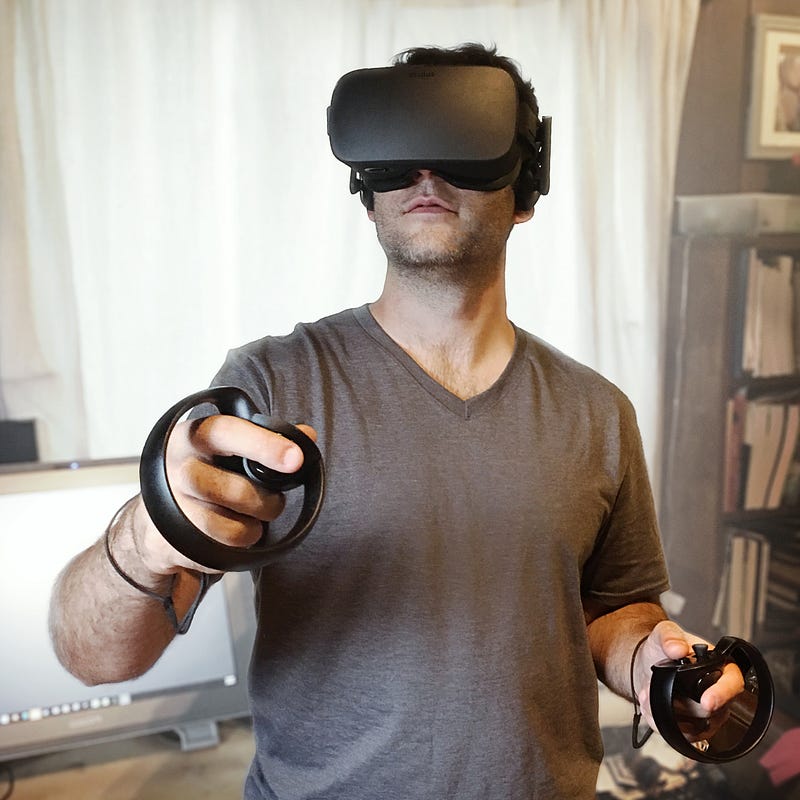 Joe Daniels working in VR
Joe Daniels working in VR
A: How long will it take do you think before we see VR animation taught in schools and used professionally in big studios?
J: I’ve spoken to a couple of universities. In my experience, schools are usually ahead of the studios in terms of software and hardware adoption because it pays for them to be ahead. Some wise colleges are currently creating innovative programs to teach their students these new tools. Over the next year or two we’re going to start seeing middle size and big studios experimenting with it in production. I’ve been talking to a couple of great production houses that are starting to get a pipeline going for VR storyboarding specifically because they’re seeing how beneficial it is. VR is becoming the best productivity tool for professional artists. I’m going to love seeing the studios making the jump! Then the individuals will be like: “Oh, of course we want to learn this because, you know, that’s what they do at Pixar.”
A: Do you feel any resistance from the animators community? What’s your feeling?
J: In general, they love it. But animators are difficult people to convince to change (myself included!). They do monotonous processes day in day out. They get used to how they do it. In some ways, it’s almost easier to talk to fine arts related people or experimental artists rather than animators. Because they (the animators) truly trust their process. As we’re helping people to adapt to this new medium we need to build relationships with trust, show the value in what we bring in, as well as see if animators really want to work this way.
“VR experiences are amazing when done right but if you’re more practical, like I try to be, I also want to know how does it apply to what I do today.”
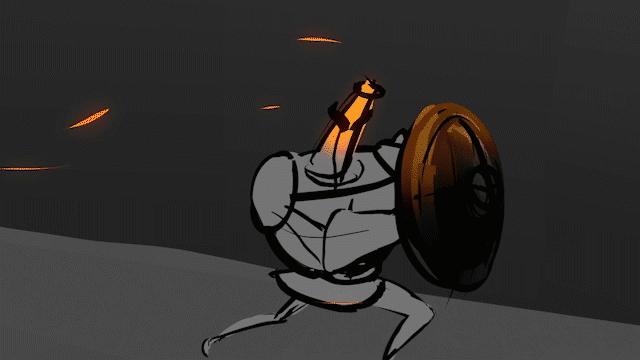
A: As you have mentioned, animating in VR is becoming a thing since the last Quill release in February. I see you spend a lot of time replying to all the questions left by the AnimVR users on the Facebook support page. What/Who is your top priority right now, besides your daily job?
J: I’m very interested in helping the average user getting started. I’m slightly more interested in helping studios that aspire to adapt their workflow. Getting studios invested in these types of workflows will not only help its development, but also be the best way to spread excitement about animating in VR as a valid and productive way of working. One of the things that I like about Quill is that it’s not likely that we’ll get too many features and see it become a nebulous thing that nobody exactly knows how to use. Based on my talks with the Quill team, they want to stay very focused on drawn art, illustration, and animation. Think of it as a VR Photoshop/After Effects type of thing. What I really like about AnimVR is that it’s posed to be unique. A sort of Maya of VR that allows a variety of diverse ways to create. As it is very early, we don’t necessarily know how people are going to use these tools yet. Right now, we need to teach people how we think they want to use these tools. Then, of course, they’re going to come up with uses that are going to be totally different, and we’ll learn from that.
“What I do in a couple of seconds in VR takes me twenty to thirty minutes to block out in a meaningful way in a traditional pipeline.“
A: Do you think that we will see creators and studios releasing asset packages that would allow individual users to rig their characters and animate their scenes on the fly? Is it something you’d be into?
J: Yes, that is an area that I do want to reach. Actually, the artist Nick Ladd is working on an effects library. He’s really interested in that type of animation. I think that’s great! If I need an explosion, I just drop that in, and boom! For character animation, having things that you can pose and move around is also going to be important to people picking it up on the side.
A: What do you have to say to newcomers and/or animators getting into painting/storyboarding/animating in VR?
J: You NEED to try drawing and animating in VR. AnimVR is a powerful tool that allows you to craft dimensional art in an intuitive way. With some practice not only you will get better at creating, but you will also think less about what you’re doing. For example when traditional artists switch over to drawing and sculpting digitally, it’s great but they must learn the hotkeys and think about all these digital constructs in order to manipulate the software. VR takes what once was a series of keystrokes on a keyboard and reduces it to a single intuitive gesture. The technology gets more or less out of the way so you can spend time immersed in your artwork. If it’s more effortless to create something, you’re more willing to experiment, and get it wrong, and mess it up, and make it better!
A: Thank you Joe! Keep rocking!
Joe will be giving a workshop this summer as part of the Anomalia VR Development Lab in Czech Republic.
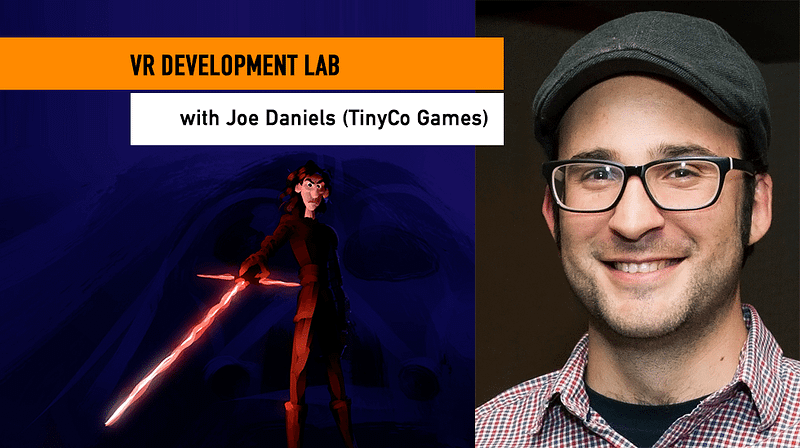
Find Joe at:
Joe’s Blog Art of Joe
Google+
Facebook
Instagram
Twitter
Vimeo
Gumroad
LinkedIn
And make sure to follow the Virtual Animation and AnimVR Support Facebook groups!


